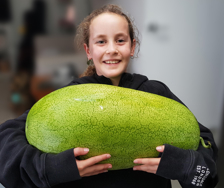Yates Account
Join now
Create a Yates account today!
Sign up to join the Yates Garden Club for monthly e-mails packed with seasonal inspiration, tips for success & exclusive promotions.
Plus if you’re a Garden Club member you can take part in the Yates Growing Community - a blog to share successes, get advice & win prizes in fun challenges along the way!

Forgot password
Enter the email address associated with your account, and we'll email you a new password.

Bromeliads are the perfect combination; they're unusual, undeniably attractive and very easy to cultivate. Many species are grown outdoors successfully in subtropical or frost-free areas. They can also be grown indoors, although flowering rarely occurs inside.

Neoregelia
One of the common names for this bromeliad group is ‘Heart of Flame’. This aptly describes the way the plant’s centre colours up, in order to guide pollinating insects to the tiny, insignificant flowers.

Pineapple
The best-known bromeliad is the ever-popular pineapple! Pineapples for eating can be grown in humid, frost-free climates. It can take up to two years for the fruit to develop and ripen. In cooler climates, the pineapple can be grown as a scene-stealing indoor plant.

Billbergia Nutans
Billbergia Nutans is one of the easiest bromeliads to grow. ‘Nutans’ means ‘nodding’, which describes the distinctive drooping flower stems. It will grow indoors or out. As long as the soil is well-drained, it's hardy enough to handle light frosts.

Spanish Moss
Spanish Moss (Tillandsia usneoides) can survive on the moisture and oxygen it captures from the surrounding air. It doesn’t need any soil and can be draped from any convenient position in a warm, humid, lightly shaded position. The greatest threat it faces is from passing birds – they love to steal sections of the soft plant to line their nests!

Aechmea
The most popular aechmeas have blue-grey leaves and a central clump of jewel-like mauve flowers that hide themselves amongst pink bracts.












Share
Share this article on social media